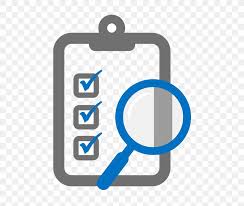15 Tips for Conducting Effective A/B Testing for Conversion Rate Optimization
A/B testing has become an essential tool for marketers and website owners looking to optimize their conversion rates. By comparing two different versions of a webpage or an element, businesses can identify which variation performs better and make data-driven decisions to improve their digital presence. However, conducting effective A/B testing requires a strategic approach and attention to detail. Here are 15 tips to help you make the most out of your A/B testing endeavors.
1️⃣ Clearly Define Your Goals: Before embarking on any A/B testing, it is crucial to clearly define the goals you want to achieve. Whether it is increasing sign-ups, improving click-through rates, or boosting sales, having a specific objective will help you measure success accurately.
2️⃣ Focus on One Change at a Time: To ensure accurate results and eliminate confusion, focus on testing one change at a time. Whether it's a headline, button color, or layout, isolate variables to determine the true impact on conversions.
3️⃣ Gather Sufficient Data: A/B testing requires statistical significance to draw reliable conclusions. Ensure you have gathered a sufficient sample size before analyzing your results. This will help avoid hasty judgments based on limited data.
4️⃣ Test on Different Devices: In today's mobile-dominated world, it is crucial to test your variations on various devices, including smartphones, tablets, and desktops. This ensures a seamless user experience across platforms.
5️⃣ Segment Your Audience: Segmenting your audience allows you to tailor A/B tests to specific user demographics or behaviors. By understanding your audience better, you can identify which variations resonate most with each segment, leading to higher conversion rates overall.
6️⃣ Analyze User Behavior: Dive into your analytics to gain insight into user behavior. By understanding how visitors interact with your website, you can identify areas that need improvement and create meaningful variations to test.
7️⃣ Consider User Intent: When conducting A/B tests, keep user intent in mind. What are your visitors looking for? By aligning your variations with user intent, you can increase the likelihood of conversions.
8️⃣ Utilize Heatmaps: Heatmaps provide a visual representation of user activity on your website. By analyzing hotspots and understanding where users spend the most time, you can optimize your variations accordingly.
9️⃣ Test Different Call-to-Action (CTA) Phrases: The choice of words matters when it comes to CTAs. Test different phrases to see which resonates best with your audience, such as "Buy Now," "Learn More," or "Subscribe Today."
🔟 Experiment with Button Placement: The placement of buttons can significantly impact conversion rates. Test different positions, such as above the fold, at the end of an article, or in a sidebar, to determine the optimal location.
1️⃣1️⃣ Optimize Loading Times: A slow-loading website can deter visitors from converting. A/B test different page load times to ensure your website is fast and responsive, enhancing the overall user experience.
1️⃣2️⃣ Create Compelling Headlines: Test different headline variations to see which captures your audience's attention and encourages them to continue engaging with your content.
1️⃣3️⃣ Test Imagery and Visuals: Visual elements play a crucial role in engaging users. Experiment with different images, videos, or graphics to determine what resonates best with your target audience.
1️⃣4️⃣ Personalize the User Experience: Tailor your variations based on user preferences or past behavior. By personalizing the user experience, you can enhance relevance and increase conversions.
1️⃣5️⃣ Monitor and Iterate: A/B testing is an ongoing process. Continuously monitor your results, iterate on successful variations, and refine your tests to achieve optimal conversion rates.
By implementing these 15 tips, you can conduct A/B tests effectively and make data-driven decisions to optimize your conversion rates. Remember to be patient, gather sufficient data, and always focus on improving the user experience. With the right approach, A/B testing can become a powerful tool in your digital marketing arsenal.




No comments yet. Be the first to share your thoughts!